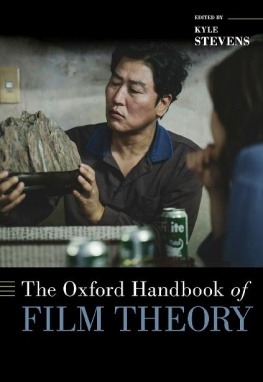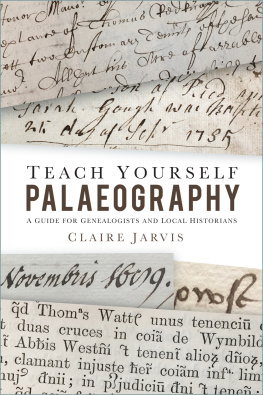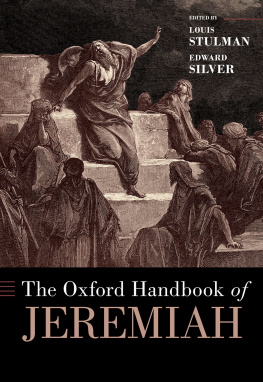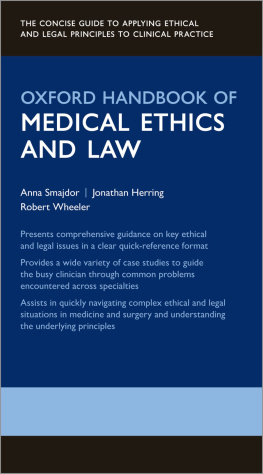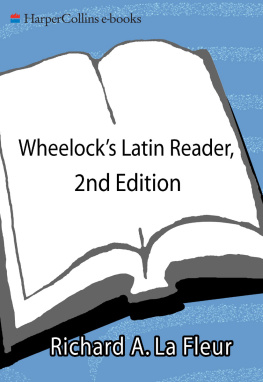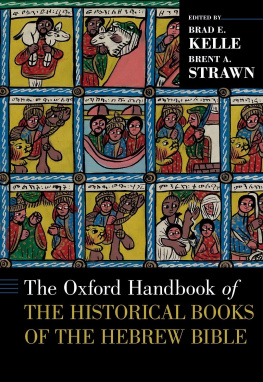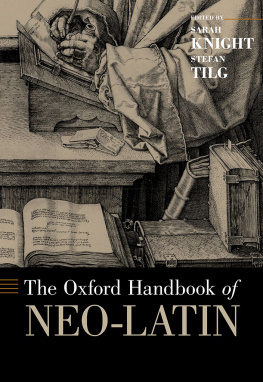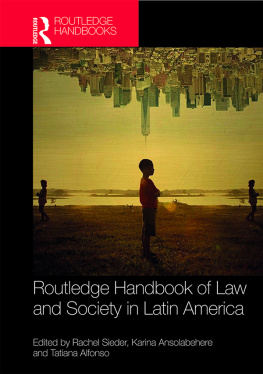Oxford University Press is a department of the University of Oxford. It furthers the Universitys objective of excellence in research, scholarship, and education by publishing worldwide. Oxford is a registered trade mark of Oxford University Press in the UK and certain other countries.
198 Madison Avenue, New York, NY 10016, United States of America.
All rights reserved. No part of this publication may be reproduced, stored in a retrieval system, or transmitted, in any form or by any means, without the prior permission in writing of Oxford University Press, or as expressly permitted by law, by license, or under terms agreed with the appropriate reproduction rights organization. Inquiries concerning reproduction outside the scope of the above should be sent to the Rights Department, Oxford University Press, at the address above.
You must not circulate this work in any other form and you must impose this same condition on any acquirer.
Preface and Acknowledgments
In organizing the Oxford Handbook of Latin Palaeography, we have been guided by the dictates of Leonard Boyle, who first coined the term integral palaeography, whereby he encouraged the study of palaeography not as an isolated discipline but as one bound up with other aspects of the manuscript book. To quote from the preface of his collected essays:
On y retrouve sa proccupation constante dtudier le codex comme un ensemble et de lanalyser sous divers angles permettant de mieux reconstituer lhistoire du livre mdival. Il utilise toutes les ressources de la palographie, de la codicologie, de lhistoire du livre et de sa dcoration pour retrouver les traces du milieu dorigine.
(Integral Palaeography, Preface vii)
The present handbook consists of five parts devoted to Script, Material Embodiment and Techniques, Cultural Setting, Selected Scriptoria and Libraries, and Varieties of Book Usage. The emphasis throughout is on Latin palaeography. We deemed it impossible to include a section on decoration and illumination for reasons of length and cost. Part , devoted to script, of necessity, looms large and details the evolution of Latin book hands from late antiquity to the Renaissance. The coverage given to these varied scripts is both traditional and innovative. Each contributor was asked to provide a detailed history of the script, its nomenclature, its particular letterforms (including abbreviations and ligatures) and to include some discussion of the cultural relevancy of the script (when appropriate). In contrast with earlier overviews, we have given rather full coverage to the scripts of late antiquity, particularly Old Roman Cursive and New Roman Cursive. In one instance, namely the section dealing with Visigothic script, the author has been granted some latitude, since we felt that Visigothic script in general had received short shrift in earlier handbooks and therefore merited a more extensive treatment (particularly under the magisterial guidance of Jess Alturo i Perucho). The discussion of the evolution of Gothic script in Europe may also call for some words of explanation. The section opens with an expertly presented overview by Albert Derolez of the problems involved in the nomenclature of Gothic script. Subsequent articles deal with the evolution of Gothic script in various regions, including the traditional division of Northern (France, Germany, and England) and Southern Gothic (Italy), but also covering less well-mapped areas such as Hungary, the Czech Republic, and Slovakia. We have also attempted throughout to provide readers with copious plates and illustrations to guide their assimilation of the specifics of individual scripts. This practice contrasts somewhat with earlier treatments where illustrative material had been kept to a minimum.
We are very grateful to our editors at Oxford University Press for their generous indulgence.
Part , devoted to the material embodiment of the codex, contains the standard articles on the stages of manuscript production, the mise-en-page of the manuscript book, and the format of the manuscript book. In addition, we have commissioned two articles which deal more exclusively with newly established disciplines in the field of codicology, namely quantitative and comparative codicology.
Part : Varieties of Book Usage, guides the graduate student and incipient palaeographer through selected genres of the manuscript book that may pose specific problems for the researcher. Herein, the reader will find overviews of such topics as legal manuscripts at Bologna, Books of Hours, glossed manuscripts and glossaries, the manuscript miscellany, florilegia, and theological texts. The emphasis in this final part is placed squarely on specifics of page layout, decoration, and other vagaries of the genre, though authors have been encouraged, where appropriate, to include some discussion of the cultural and intellectual importance of the genre. The editors of the volume also commissioned a lengthy article on manuscript cataloguing from Consuelo Dutschke, cataloguer of Western Manuscripts at Columbia University, which we hope will serve as a practical guide to the cataloguing of Latin manuscripts.
The handbook, it is hoped, will be accessible to the broadest audience. To this end, all articles are published in English (though many were originally written in Italian, German, Spanish, and French). We have benefited throughout the editing of the handbook from the tireless work of many scholars who labored to render the original contributions into easily accessible English. In particular, we are extremely grateful to Consuelo Dutschke and Anna A. Grotans, who labored long and tirelessly on many of the translations from Italian and German.
The handbook could not have been produced without the generosity of the individual contributors who shared so freely of their knowledge and expertise. We are extremely indebted to each for his or her patience, indulgence, and goodwill. We would also like to thank the many people behind the scenes who gave of their time and energies during what can only be described as an elephantine gestation prior to publication. Michael Jean, Quinn Griffin, and William Little helped to format bibliography and notes and provided expert help on technical matters. We are also most grateful to Harald Anderson for putting together so expertly the two indices, and to John Beeby who provided the abstracts for each article. Wendy Watkins, Curator of the Center for Epigraphical and Palaeographical Studies at the Ohio State University, readily answered our many queries regarding bibliography. Our thanks also to Ornella Rossi and to John Beeby for editorial assistance. We are indebted to the College of Humanities and the Arts of The Ohio State University and the Department of Classics at The Ohio State University and its Chair, Benjamin Acosta-Hughes, for much appreciated support. We are also grateful to Stefan Vranka, acquisitions editor at Oxford University Press, who first broached the idea of a new handbook with Prof. Coulson and who has expertly shepherded the project to conclusion.
Contents
Introduction
Frank T. Coulson



